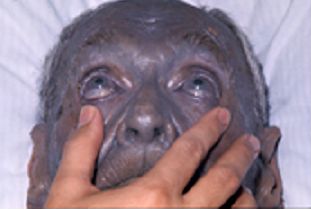
Assos, also known as Behramkale or for short Behram, is a small historically rich town in the Ayvacık district of the Çanakkale Province, Turkey. During Pliny the Elder's time, the city also bore the name Apollonia (Ἀπολλωνία).
Larissa is the capital and largest city of Thessaly, Greece
The following is a list of regions of Ancient Anatolia, also known as "Asia Minor," in the present day Anatolia region of Turkey in Western Asia.
Chryse is a name occurring in Ancient Greek geography, reported by ancient authors to have referred to the following places:
Polichna is a village in Poland.
Tragasai, was a town of the ancient Troad.
Achaiion or Achaeïum or Achaeum was a town in the Tenedian Peraia of the ancient Troad. The legend AX (ACH) which some bronze coins found in this region bear is thought to refer to Ach(aiion) by Louis Robert, but others attribute the coins to Achilleion.
Scamandria or Skamandreia was a small town in the ancient Troad in ancient Mysia, no doubt situated on the Scamander River in the plain of Troy.
Scamandrus or Skamandros, was a small town in the ancient Troad in ancient Mysia, no doubt situated on the Scamander River in the plain of Troy.
Aianteion was a town in ancient Troad.
Traron was a town of ancient Troad, on the Hellespont. Tzetzes mentions a mountain so named, also in the Troad, with which the town may be connected.
Gentinos was a town in ancient Troad. The inhabitants of Gentinos are cited in the tribute records of Athens between the years 452/1 and 444/3 BCE, so the city was part of the Delian League. Gentinos minted bronze coins inscribed «ΓΕΝ» or «ΓΕΝΤΙ».
Cremaste or Kremaste was a town in ancient Troad. Xenophon speaks of the town and the plain nearby "where there are the gold mines of the Abydeni." Strabo mentions the gold mines of Astyra which town is nearby. Gold mines belonging to Lampsacus are mentioned by Pliny the Elder and by Polyaenus; and they may be the same as those of Cremaste, as the town was generally between Abydus and Lampsacus.
Cocylium or Kokylion was a town of the ancient Troad or of Mysia. Xenophon mentions it indirectly by pointing out that the inhabitants of Cocylium (Κοκυλίτης), together with those of Ilium and Neandria, declared themselves independent and allied with the Spartan Dercylidas when he went to Aeolia with an army to try to liberate the Greek colonies from Persian rule. Pliny the Elder notes Cocylium among the cities that, in his time, had disappeared from the Troad.
Alazia was a city of ancient Troad near the River Odrysses, which flows out of Lake Dascylitis from the west through the plain of Mygdonia and empties into the Rhyndacus. Demetrius of Scepsis calls the town Alazonia (Ἀλαζονία) and places it along with Argyria on the right bank of the Aesepus River near Scepsis. Strabo further clarifies its location as at the foot of Mount Ida near the source of the Aesepus.
This page is based on this
Wikipedia article Text is available under the
CC BY-SA 4.0 license; additional terms may apply.
Images, videos and audio are available under their respective licenses.


